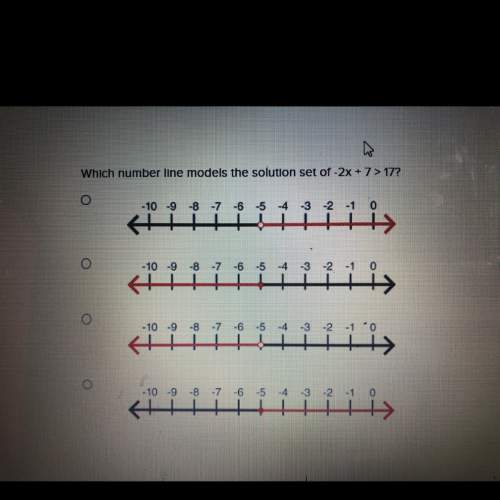
Mathematics, 23.03.2021 01:00 loganharper992
According to the University of Nevada Center for Logistics Management, 6% of all merchandise sold in the United States gets returned. A Houston department store sampled 80 items sold in January and found that 10 of the items were returned. (a)Construct a point estimate of the proportion of items returned for the population of sales transactions at the Houston store. If required, round your answer to three decimal places. 0.15 (b)Construct a 95% confidence interval for the proportion of returns at the Houston store. If required, round your answer to three decimal places. 0.0718 to 0.2282 (c)Is the proportion of returns at the Houston store significantly different from the returns for the nation as a whole

Answers: 2


Other questions on the subject: Mathematics

Mathematics, 21.06.2019 22:50, tali2561
Aclassroom is made up of 11 boys and 14 girls. the teacher has four main classroom responsibilities that she wants to hand out to four different students (one for each of the four students). if the teacher chooses 4 of the students at random, then what is the probability that the four students chosen to complete the responsibilities will be all boys?
Answers: 1


Mathematics, 22.06.2019 00:30, nataliemoore1974
Olivia is using 160 quilt squares to make a red, yellow, and blue quilt if 25% of the quilt are red and 30% are yellow how many quilt squares are blue
Answers: 3

Mathematics, 22.06.2019 02:00, darianhaynes
Study published in the journal of personality and individual differences found that adults with adhd displayed more creative achievement than those who didn't have the disorder. "for the same reason that adhd might create problems, like distraction, it can also allow an openness to new ideas," says holly white, assistant professor of cognitive psychology. "not being completely focused on a task lets the mind make associations that might not have happened otherwise." white and priti shah at the university of michigan gave 60 college students – half of them with adhd – a series of tests measuring creativity across 10 domains. the adhd group scored higher across the board. the adhd group showed more of a preference for brainstorming and generating ideas than the non-adhd group, which preferred refining and clarifying ideas. the adhd status of the participants was established by asking whether the individual had ever been clinically diagnosed with adhd/add. the tests of creativity were pencil-and-paper tasks administered in a laboratory setting. each of the ten scales was comprised of multiple questions, the scores on which were summed (e. g., writing creativity: "how many words can you make from the letters in the word 'psychology' invention creativity: "write down as many uses for a paper clip that you can think of.") this procedure does allow for a participant to be scored as showing no creativity under these conditions. a) state the research question in plain language (i wonder if is related to (1 point) b) state the null hypothesis (1 point) c) state the research hypothesis (1 point) d) is the research hypothesis directional or non-directional (1 point) e) name the predictor / independent variable f) give the operational definition of the predictor / independent variable g) evaluate the construct validity of the predictor / independent variable. (face, procedure, method-match) h) name the outcome / dependent variable i) give the operational definition of the outcome / dependent variable. j) evaluate the construct validity of the outcome / dependent variable. (face, procedure, method-match)
Answers: 1
You know the right answer?
According to the University of Nevada Center for Logistics Management, 6% of all merchandise sold in...
Questions in other subjects:




Mathematics, 16.07.2020 06:01




Mathematics, 16.07.2020 06:01


Mathematics, 16.07.2020 06:01




